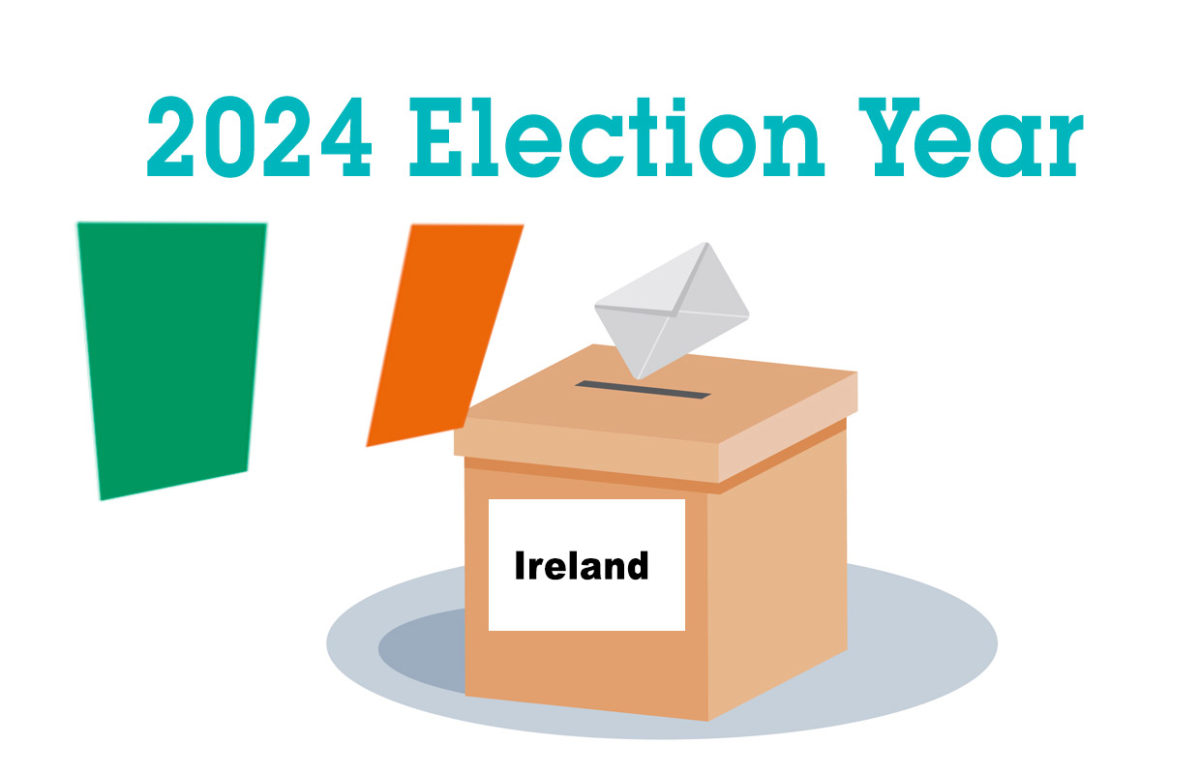Ireland had a general election on 29 November but isn’t expected to have a government until the new year. The government is likely to be another coalition led by the two historical centrist parties Fianna Fáil and Fine Gael, with at least one other partner.
After the last election in 2020, it took five months to form a government, which saw Fianna Fáil* and Fine Gael paired with the Greens and sharing the Taoiseach (prime minister) and Tánaiste (deputy prime minister) positions, alternating two years each. Fine Gael’s Simon Harris is currently Taoiseach, and Fianna Fáil’s Micheál Martin is Tánaiste. But the Greens lost all but one of their 12 seats in this election, so new coalition partners are needed.
There are 174 seats in the Dáil parliament, so 88 are required for a majority. Fianna Fáil and Fine Gael combined have 86, although Fianna Fáil stretched its lead as the party with the most seats. They could try to form a coalition with Labour or the Social Democrats, or negotiate with the independent TDs (members of the Dáil). Historically, non-aligned politicians have been quite influential in Irish politics. A third of the candidates in this election ran as independents.
Election results (seats)
Fianna Fáil: 48
Sinn Féin: 39
Fine Gael: 38
Labour: 11
Social Democrats: 11
Independent Ireland: 4
People Before Profit–Solidarity: 3
Aontú: 2
100% Redress: 1
Greens: 1
Independents: 16
The history of all three main parties goes back to Irish independence. Sinn Féin and Fianna Fáil opposed the partition of Ireland in the 1921 Anglo-Irish treaty, whereas Fine Gael supported it. As well as being considered further to the left than the other main parties, Sinn Féin still calls for a united Ireland, and participates in elections both in Northern Ireland and the Republic. Sinn Féin is now the leading party in the Northern Ireland Assembly and has been steadily increasing its seats in the Dáil since 2011.
Ireland has a very broad system of proportional representation that makes it difficult for one party to govern alone. Voters can cast votes for up to four parties in order of preference. Each constituency has 3, 4 or 5 seats, and second, third or fourth preference votes are transferred until each seat is filled. Smaller parties and independent candidates have a better chance of being elected than in a first-past-the-post system.
This video is designed for Irish schools and explains the Single Transferable Vote system by showing groups of pupils in a playground.
* You can hear Irish people pronouncing the Irish terms on this page on forvo.com: Fianna Fáil, Fine Gael, Taoiseach, Tánaiste, Dáil, Sinn Féin
For more about the Irish language, check out this virtual exhibition by the Irish Cultural Centre in Paris.
> 100 Years Ago: Northern Ireland Came into Existence
> Irish Population Returns to Pre-Famine Levels
> Changing Ireland
> Ireland: Home of Halloween
> Ireland Has a New Holiday
> Happy St Patrick’s!
> Ireland: 100 years of the Olympics
> France vs Ireland: 120 years of Rugby
> Irish Independence: Online Exhibition





